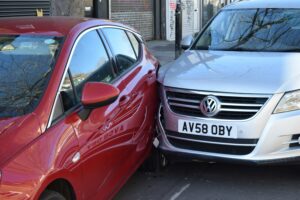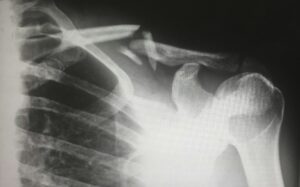Table of Contents
Toggle3 Elements of Standing to Sue

You must satisfy three elements before you have standing to sue. If you lack any of these elements, the court will dismiss your lawsuit for lack of standing. The requirement for legal standing is based on Article III of the US Constitution and California state law. Following is an explanation of the three elements of standing to sue.
Element #1: Injury In Fact
You must normally suffer physical or financial harm to file a personal injury lawsuit. For example, you can show an injury in fact if you suffered a broken arm in a car accident. However, you usually cannot file a personal injury lawsuit simply because someone frightened you or caused you to suffer emotional distress. Nevertheless, once you establish that you suffered a physical injury, you can also claim compensation for emotional distress.
Certain claims, such as intentional or negligent infliction of emotional distress, can be established without proving physical injury. Even then, however, your distress must be severe, and it must have occurred before you filed your claim. In other words, it must be real and present harm, not hypothetical future harm.
Causation
The second element of standing to sue is causation. You must establish a causal link between the defendant’s behavior and the harm that you suffered. California law recognizes two forms of causation– “but for” causation and “proximate” causation. You must allege “but for” causation to establish standing to sue. “But for” causation means that you would not have suffered harm except for the defendant’s behavior.
Although “but for” causation will satisfy the second element of standing to sue, it might not be enough to establish causation thoroughly enough to win your lawsuit. In other words, even if “but for” causation can get you into court, it might not be enough to get you out of court with a victory. For that, you may need to prove proximate causation as well.
Redressability
The third and final element of legal standing is called “redressability.” This means that the nature of the harm you suffered must be such that the law can compensate you for it. This is not as difficult as it might seem. Suppose, for example, that you wish to sue for the wrongful death of a loved one. How can a court place a monetary value upon human life? Intuitively many people would think this is impossible, but courts do it every day.
Courts also award compensation for intangible injuries such as pain and suffering, emotional distress, mental anguish, loss of enjoyment of life, and other forms of intangible harm. An example of the harm that might fail the redressability test would be harm caused by someone residing outside of the United States whose assets are all located outside of the United States. Since the court has no jurisdiction abroad, it might consider the harm unredressable.
Establishing Standing is Not Enough to Win Your Claim
Establishing standing does not establish liability. All standing does is get you into court so that you can try to prove the defendant’s liability.
Standing and Settlement Negotiations
Strictly speaking, you don’t have to establish standing to commence settlement negotiations with the opposing party. Nevertheless, if the opposing party concludes that you lack standing to file a lawsuit, they will probably refuse to negotiate with you. After all, if you cannot file a lawsuit, you cannot enforce your claim, and you will have no bargaining power to pursue a settlement.
You can file a lawsuit if you believe you have standing and the opposing party disagrees. If the court agrees with you, they will allow the lawsuit to proceed, and standing will no longer be an issue. If the court agrees with the opposing party that you have no standing, they will dismiss your lawsuit. Your best bet is to establish standing before you even begin seeking negotiations with the opposing party (which will probably be an insurance company).
Consult With a Lawyer to Determine if You Have Standing to Sue
Standing is a tricky issue to determine, and it can be even trickier to prove. If you have any reason to doubt whether you have standing, it might be better to schedule a consultation with a personal injury lawyer than to file a claim only to have it dismissed.
Contact Our Personal Injury Law Firm in Los Angeles, CA
If you were injured in an accident in Los Angeles, CA or you lost a loved one and you need legal assistance, please contact us to schedule a free consultation. One of our Los Angeles personal injury lawyers at M&Y Personal Injury Lawyers will get in touch with you soon.
M&Y Personal Injury Lawyers – Los Angeles Office
4929 Wilshire Blvd Suite 960,
Los Angeles, CA 90010
866-864-5477




